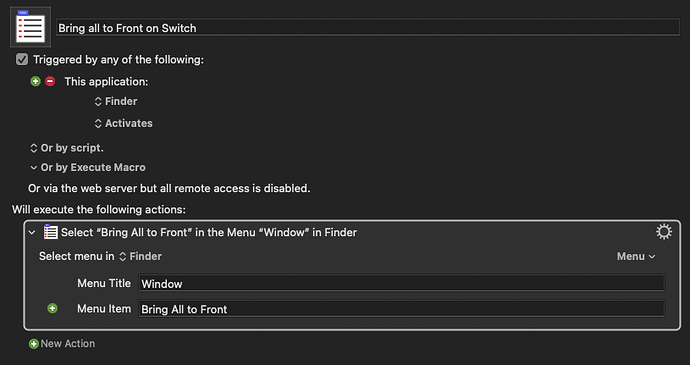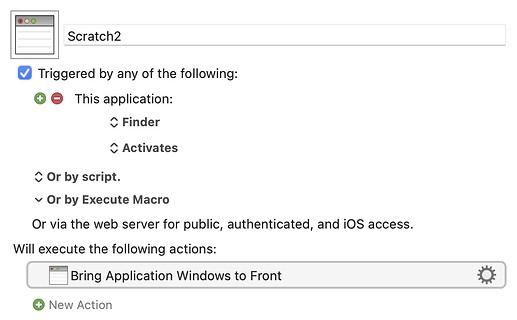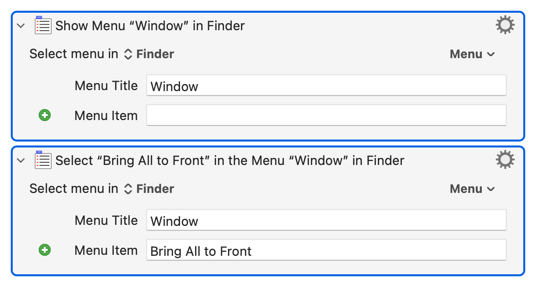Just wondering if anyone else can confirm this:
I have set up a KM workflow:
when Finder Activates:
Select "Bring All to Front" in the Menu "Window" in Finder
The idea being that if I have finder windows obscured by another application on a display, I click any available exposed desktop background, and it should bring all the finder windows to the front.
But it doesn't work for Finder windows obscured by the app you're switching out of (Even the KM Editor).
So, lets say I have a Safari window, with a Finder window behind it, and a Mail window with a Finder window behind it, if I click the empty desktop while Safari is the foreground application, the finder window behind Mail will be revealed, but not the one behind Safari, and vice versa.
If I just click Finder in the dock, all the windows come to the front, but what's going on to insulate the app you're leaving from Finder's window stack alteration?
If I manually select Window > Bring All to Front when Finder has become the foreground app after clicking the desktop, all the windows are brought to the front, but...
...If I put a second instance of the Bring All to Front macro in the KM script, which should be doing the same thing as selecting it manually, it doesn't work.
Am I missing something here?
edit Strangely, John Siracusa's Front & Center app is able to effect the behaviour correctly, but it's not able to be restricted to just one app (Finder), so presumbly the outcome is achievable somehow?
edit again The behaviour does work when selecting any Finder window as the way to switch to Finder - all finder windows are brought to the front. So is there something different about the Activation mode of clicking the Desktop background, Vs. clicking a Finder window that is tripping it up? I Note in Front & Center there's a setting to choose activation on selecting a window, vs any activation. Is there a granularity there that KM isn't exposing?



